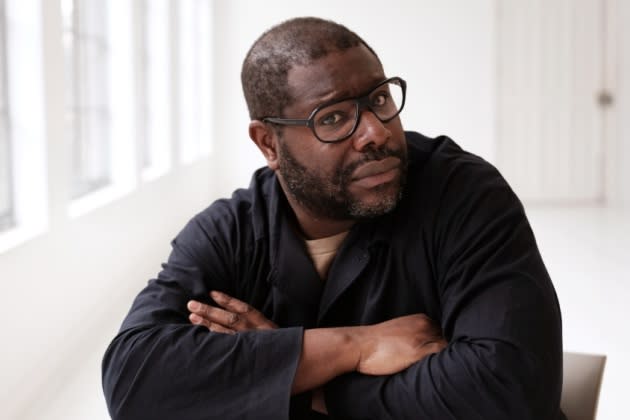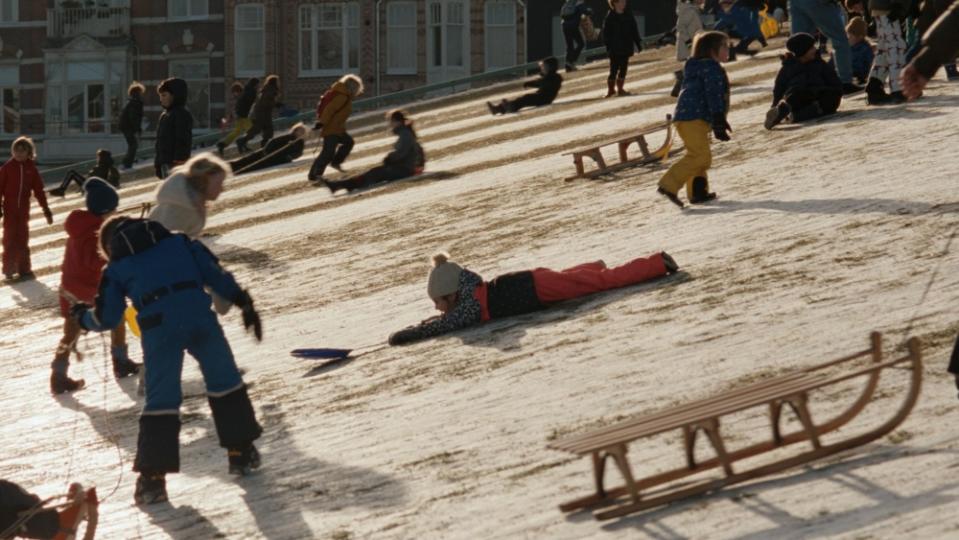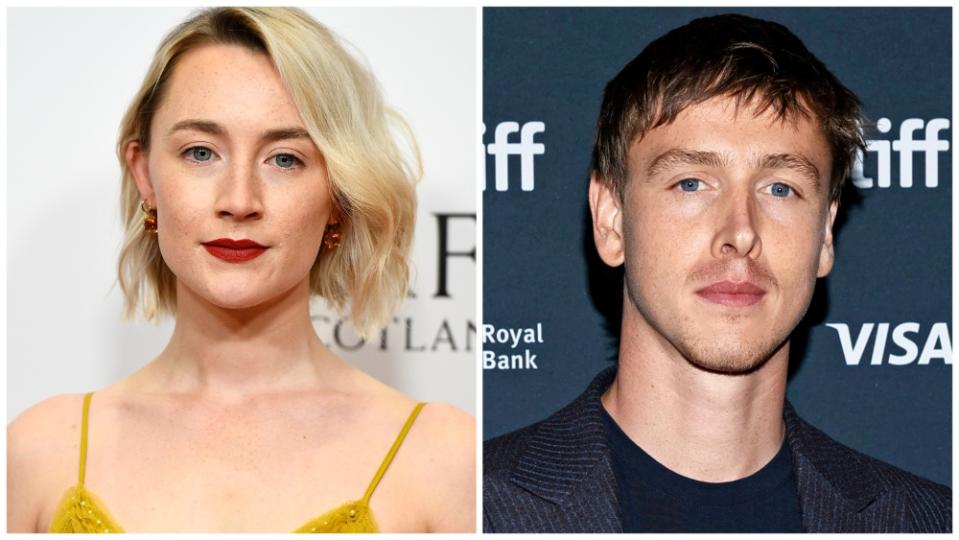Steve McQueen on His 4-Hour Documentary Epic ‘Occupied City’ and How It’s Informing His Apple TV+ Movie ‘Blitz’
- Oops!Something went wrong.Please try again later.
- Oops!Something went wrong.Please try again later.

Steve McQueen looks stressed out. He’s a few weeks into post-production on “Blitz,” his World War II drama for Apple TV+, while starting promotion on his other, long-gestating wartime project, the documentary “Occupied City.”
“It’s definitely pleasurable, but this is work,” declares McQueen with the wariness of a filmmaker who’s just been plucked out of the edit suite. “Hard work is always hard work. You can’t avoid it.”
More from Variety
Global Screen Seals Deals for Sequel 'Lassie - A New Adventure' (EXCLUSIVE)
Film Constellation Launches Global Sales on CG Family Animation 'The Growcodile' (EXCLUSIVE)
Roberto Sneider to Direct 'Blood Knot,' Starring Michael Douglas, Cameron Douglas (EXCLUSIVE)
The British director, who was Oscar-nominated for “12 Years a Slave,” didn’t set out to make back-to-back movies about the war, but “you plant seeds, and some come to fruition and others don’t,” he explains. “These two happened to blossom fairly close to each other.”
“Blitz,” which stars Saoirse Ronan and Harris Dickinson, is a drama set in London, which was bombed but never occupied by Germany during the war. In contrast, “Occupied City” — which world premieres on May 17 in Cannes’ Special Screenings section — is a narrated exploration of the Nazi occupation of Amsterdam juxtaposed with images of the present-day city during a COVID-struck year.
The A24 and New Regency-financed film, which is 4 hours and 22 minutes long and devoid of talking-head interviews or archive footage, is informed by the illustrated book “Atlas of an Occupied City (Amsterdam 1940-1945)” by Dutch author-director Bianca Stigter, who is McQueen’s partner. The couple and their children live in Amsterdam.

“Moving to a formerly occupied country and city, [the recognition of a different lived experience] is very quick,” says McQueen. “You would go downtown and see a little engraving at the side of a building and go, ‘Oh, what’s that?’ and someone tells you that’s where 50 people were rounded up, shot and killed because someone executed a German soldier. So, immediately you’re taken out of your comfort zone and confronted with the past within the presence of the city.”
By the end of World War II, the Netherlands had suffered the highest death rate of Jewish people in Western Europe, with 75% of the Jewish population killed, including more than 60,000 from Amsterdam alone.
The film rolls through around 130 local addresses to the “factual but not dispassionate” tone of a young, female narrator. The contrast of hearing the often-harrowing story behind a postcode while simultaneously seeing the banal ebb and flow of modern life can feel disorienting. That’s the point, explains McQueen.
“What we try to do always as humans is to marry the two and make sense of the two together, so that the narration illustrates the images,” says the director. “But sometimes they don’t and [in this film], sometimes one dominates more than the other, and that’s okay, because it’s about living with ghosts and about the past and the present sort of merging.”
McQueen had little issue gaining access to homes and businesses in Amsterdam for the project. “People were very receptive to us filming because of the trauma that they went through,” he says. “That vibrates to today because everyone has a story about the war and being occupied.”
One famous Amsterdam resident you won’t see in the film, however, is Anne Frank, who famously hid with her family for two years in the annex of a building in Westermarkt. The building is now home to the museum Anne Frank House. McQueen says Frank “has not been taken out of our narrative” — she figures around five times in the commentary — but he made a choice not to feature Anne Frank House.
“In some sense, I wanted to keep her as well as other people’s histories in the present and not be a thing of the past,” says the director. “I didn’t want dust to settle on it. So, to bring [the film] into a museum, which is what it is as far as Anne Frank’s house is concerned, is not what I wanted to happen.”

Now, McQueen finds himself in the unique position of delivering another film — this time a narrative feature — about the same war, only across the North Sea in his native U.K. Did the making of “Occupied City” inform production on “Blitz”? The director says that the “intense” research for the documentary helped to unlock essential minutiae about the atmosphere of war.
“It was just one of those things where we wanted to get in the details,” says McQueen. “For example, was it raining? Well, what kind of rain? Those kinds of small things that seem to be so incidental but are a huge part of how people think and act and react.”
As for when — and where — we might expect to see “Blitz” launch this year (Venice, perhaps, given the Apple TV+ of it all? Or maybe the hometown favorite, the BFI London Film Festival?), McQueen lets out a slightly panicked laugh.
“I can’t see anything,” he smiles. “I’ve just been working on it. I’m working on it.”
A24 has North American distribution rights to “Occupied City.” New Regency holds international rights.
Best of Variety
Tony Predictions: Best Musical -- Four Stand Poised to Give ‘Kimberly Akimbo’ Some Competition
This 'Fast and Furious' Arcade Cabinet Allows You to Step Behind the Wheel as Dom Toretto
Sign up for Variety’s Newsletter. For the latest news, follow us on Facebook, Twitter, and Instagram.

